Search Result
Results for "
depressive disorder
" in MedChemExpress (MCE) Product Catalog:
7
Isotope-Labeled Compounds
| Cat. No. |
Product Name |
Target |
Research Areas |
Chemical Structure |
-
- HY-B0478A
-
|
AF-1161 free base
|
5-HT Receptor
|
Neurological Disease
|
|
Trazodone (AF-1161 free base) is a serotonin receptor antagonist and reuptake inhibitor. Trazodone can be used for the research of major depressive disorder. Trazodone also has potential for sleep disorder research .
|
-
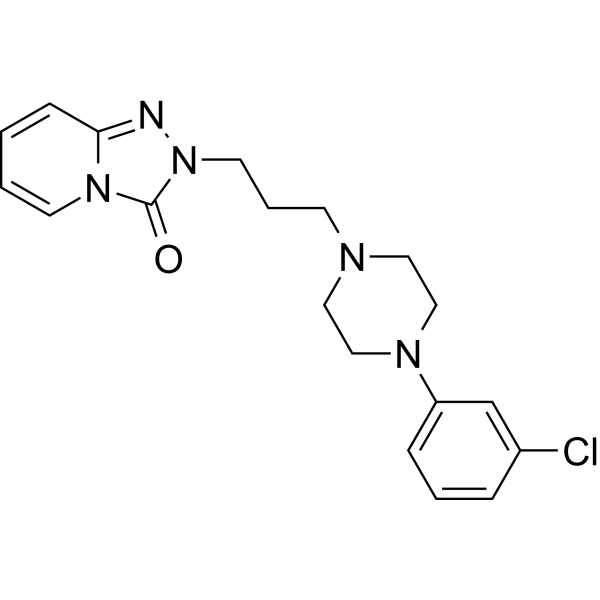
-
- HY-B0161A
-
|
(S)-Duloxetine hydrochloride; LY-248686 hydrochloride
|
Serotonin Transporter
|
Neurological Disease
|
|
Duloxetine hydrochloride ((S)-Duloxetine hydrochloride) is a serotonin-norepinephrine reuptake inhibitor (SNRI) with a Ki of 4.6 nM, used for treatment of major depressive disorder and generalized anxiety disorder (GAD) .
|
-
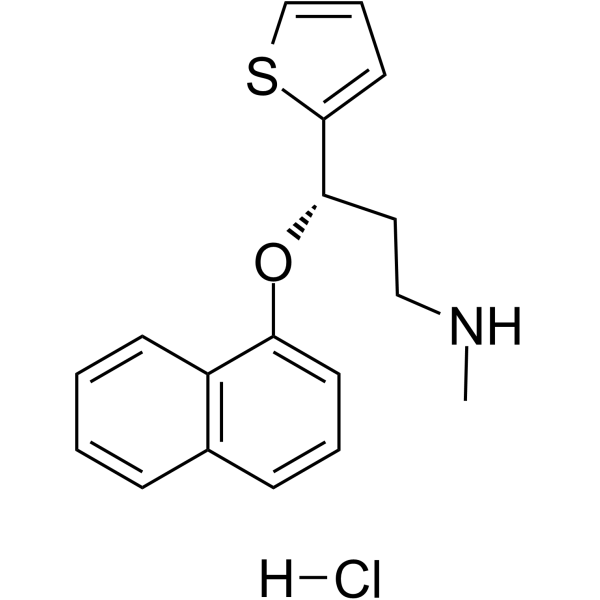
-
- HY-B0161
-
|
(S)-Duloxetine; LY248686
|
Serotonin Transporter
|
Neurological Disease
|
|
Duloxetine is a serotonin-norepinephrine reuptake inhibitor with a Ki of 4.6 nM, used for treatment of major depressive disorder and generalized anxiety disorder (GAD) .
|
-
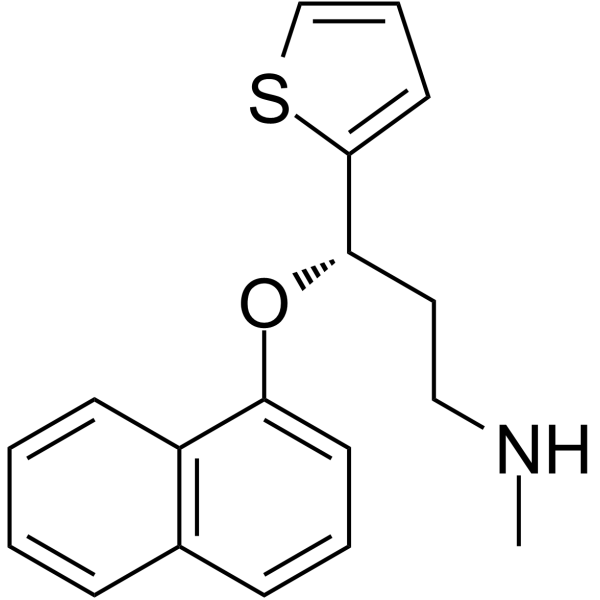
-
- HY-154977
-
-
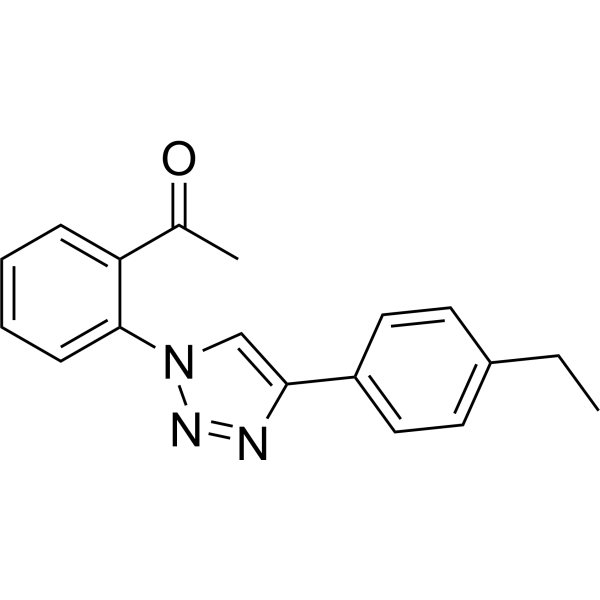
-
- HY-160207
-
-
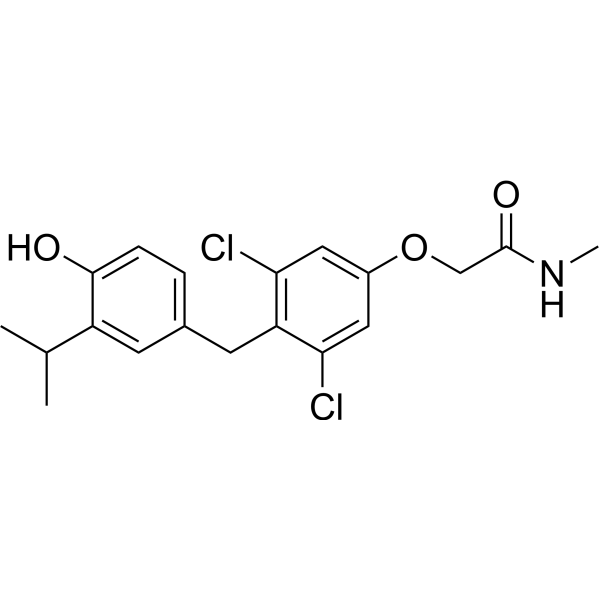
-
- HY-151216S
-
|
rel-BRL29060-d4 hydrochloride; rel-BRL29060A-d4
|
Serotonin Transporter
Autophagy
|
Inflammation/Immunology
|
|
rel-Paroxetine-d4 (hydrochloride) is an isotope-labeled Paroxetine hydrochloride (HY-B0492). Paroxetine hydrochloride is an orally active and selective serotonin-reuptake inhibitor, commonly prescribed as an GRK2 inhibitor with IC50 of 14 μM. Paroxetine hydrochloride can be used for the research of depressive disorder[1][2][3][4].
|
-

-
- HY-14262
-
|
EMD 68843; SB659746A
|
5-HT Receptor
Serotonin Transporter
|
Neurological Disease
|
|
Vilazodone (EMD 68843; SB 659746A) is a potent, selective and orally active serotonin reuptake inhibitor (SSRI) and partial 5-HT1A receptor agonist. Vilazodone exhibits antidepressant efficacy in vivo can be used for the research of major depressive disorder (MDD) and affective disorders .
|
-
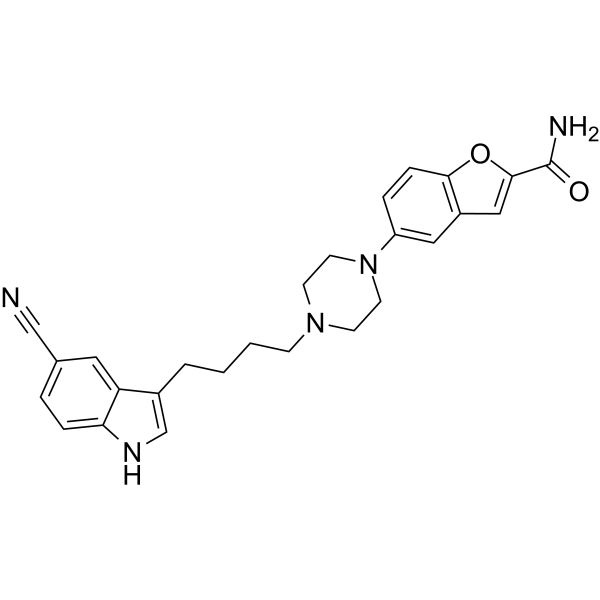
-
- HY-B0161AS
-
|
(S)-Duloxetine-d3 (hydrochloride); LY248686-d3 (hydrochloride)
|
Serotonin Transporter
|
Neurological Disease
|
|
Duloxetine-d3 (hydrochloride) is a deuterium labeled Duloxetine hydrochloride. Duloxetine hydrochloride is a serotonin-norepinephrine reuptake inhibitor (SNRI) with a Ki of 4.6 nM, used for treatment of major depressive disorder and generalized anxiety disorder (GAD)[1][2].
|
-

-
- HY-B0161E
-
|
(Rac)-Duloxetine hydrochloride
|
Serotonin Transporter
|
Neurological Disease
|
|
(±)-Duloxetine ((Rac)-Duloxetine) hydrochloride is the racemate of Duloxetine hydrochloride. Duloxetine hydrochloride, a serotonin-norepinephrine reuptake inhibitor, can be used for diabetic neuropathic pain and fibromyalgia as well as major depressive disorder research .
|
-
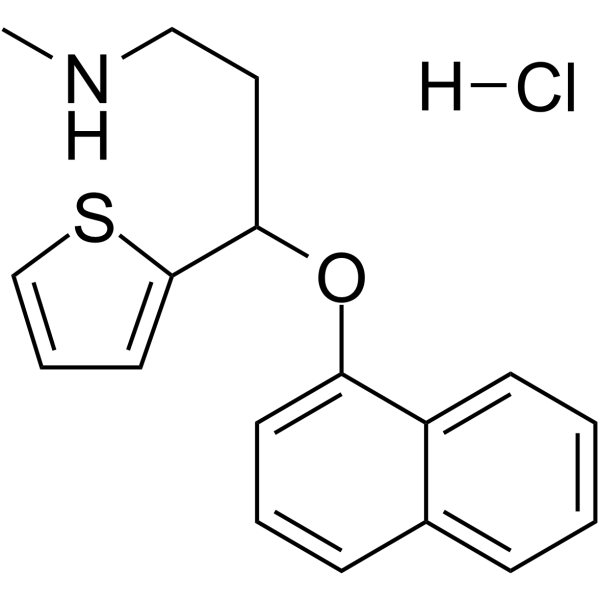
-
- HY-148417
-
|
|
Serotonin Transporter
|
Neurological Disease
|
|
ZZL-7 is a fast-onset antidepressant agent. ZZL-7 works by disrupting the interaction between the serotonin transporter (SERT) and neuronal nitric oxide synthase (nNOS) in the dorsal raphe nucleus (DRN). ZZL-7 can cross the blood-brain barrier readily. ZZL-7 can be used for the research of major depressive disorder (MDD) .
|
-
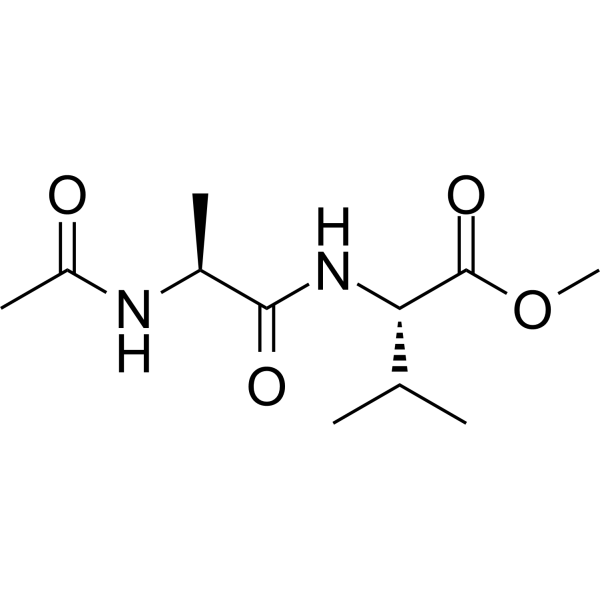
-
- HY-122347A
-
|
GW823296 maleate
|
Neurokinin Receptor
|
Neurological Disease
|
|
Orvepitant maleate (GW823296 maleate) is potent, selective, orally active and well-tolerated neurokinin-1 receptor (NK-1) antagonist with a pKi of 10.2 for human neurokinin-1 receptor. Orvepitant maleate can across the blood-brain barrier. Orvepitant maleate has the potential for depressive disorder and chronic refractory cough (CRC) treatment .
|
-
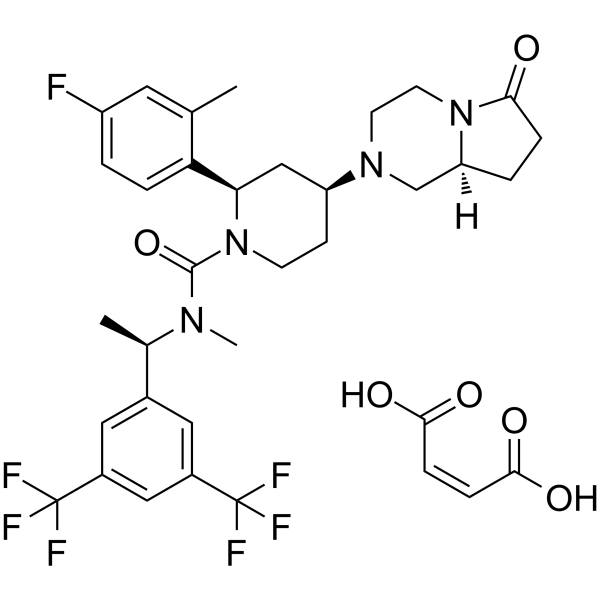
-
- HY-15413A
-
|
LY 2216684 hydrochloride
|
Serotonin Transporter
|
Neurological Disease
|
|
Edivoxetine (hydrochloride) is a selective and potent norepinephrine reuptake inhibitor (NERI) being used in depressive disorder or attention-deficit/hyperactivity disorder.
|
-
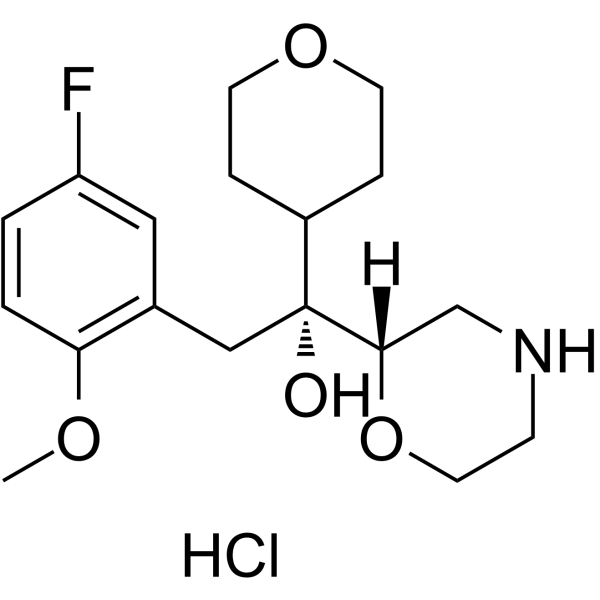
-
- HY-B0478
-
|
AF-1161
|
5-HT Receptor
|
Neurological Disease
|
|
Trazodone hydrochloride (AF-1161) is a serotonin receptor antagonist and reuptake inhibitor. Trazodone hydrochloride can be used for the research of major depressive disorder. Trazodone hydrochloride also has potential for sleep disorder research .
|
-
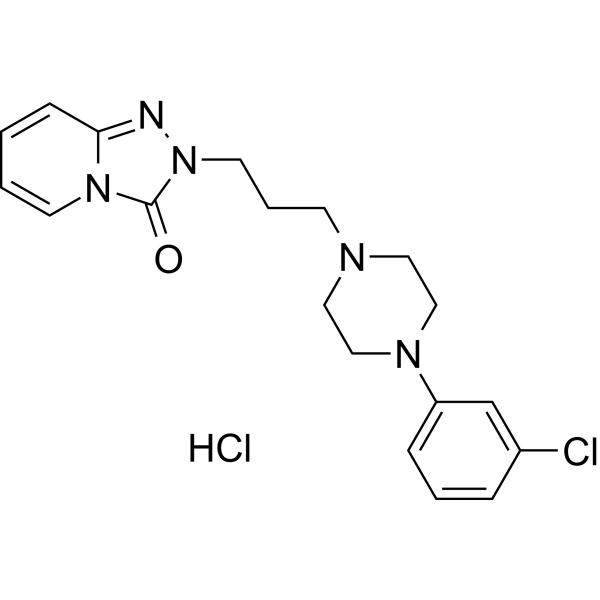
-
- HY-B0176A
-
|
|
Serotonin Transporter
|
Neurological Disease
Cancer
|
|
Sertraline hydrochloride is an antidepressant of the selective serotonin reuptake inhibitor (SSRI) class. Sertraline hydrochloride is researched for a number of diseases, such as major depressive disorder and obsessive .
|
-
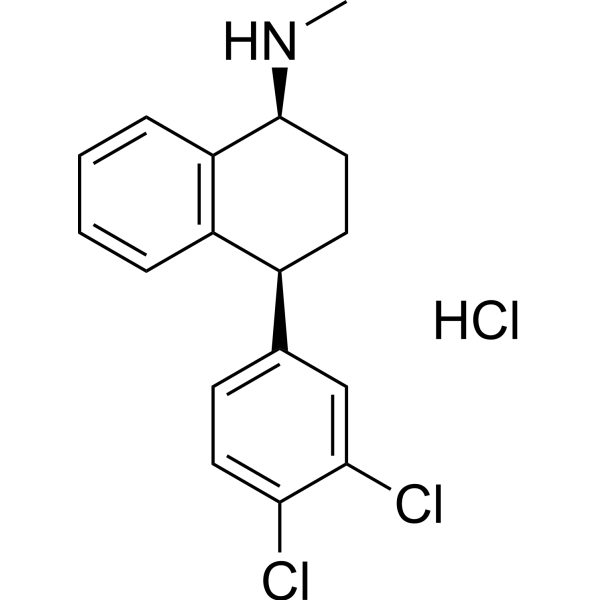
-
- HY-16728B
-
|
GLYX-13 Trifluoroacetate
|
iGluR
|
Neurological Disease
|
|
Rapastinel Trifluoroacetate (GLYX-13 Trifluoroacetate) is an NMDA receptor modulator with glycine-site partial agonist properties. Rapastinel Trifluoroacetate has the potential for major depressive disorder treatment.
|
-
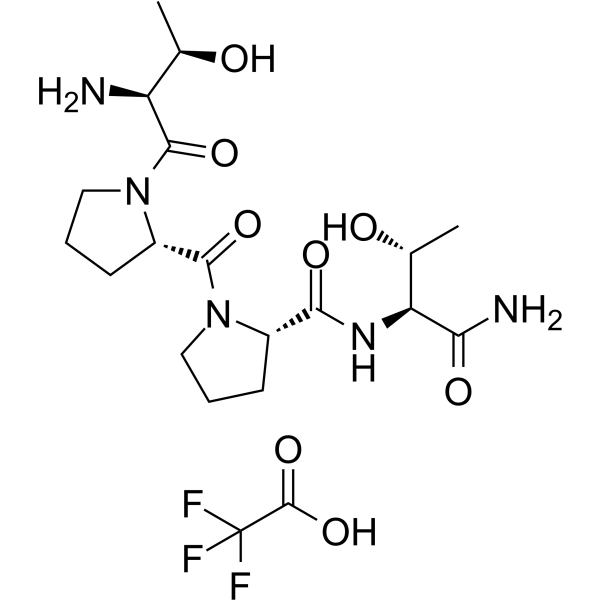
-
- HY-B0161S
-
-
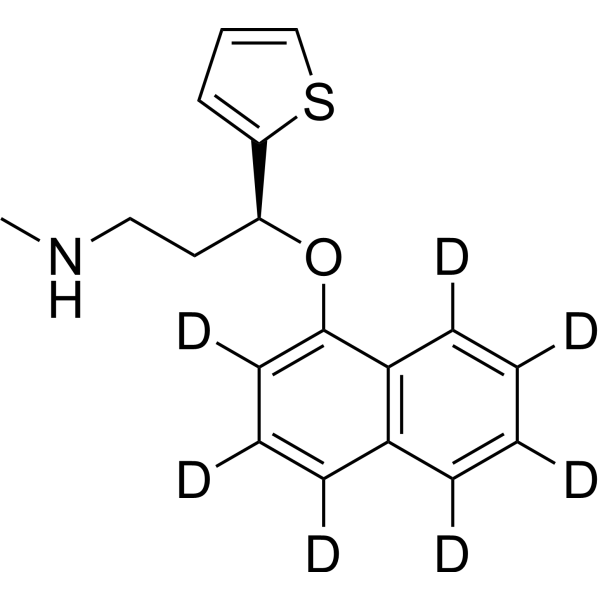
-
- HY-B0161AR
-
|
(S)-Duloxetine hydrochloride (Standard); LY-248686 hydrochloride (Standard)
|
Serotonin Transporter
|
Neurological Disease
Cancer
|
|
Duloxetine (hydrochloride) (Standard) is the analytical standard of Duloxetine (hydrochloride). This product is intended for research and analytical applications. Duloxetine hydrochloride ((S)-Duloxetine hydrochloride) is a serotonin-norepinephrine reuptake inhibitor (SNRI) with a Ki of 4.6 nM, used for treatment of major depressive disorder and generalized anxiety disorder (GAD) .
|
-
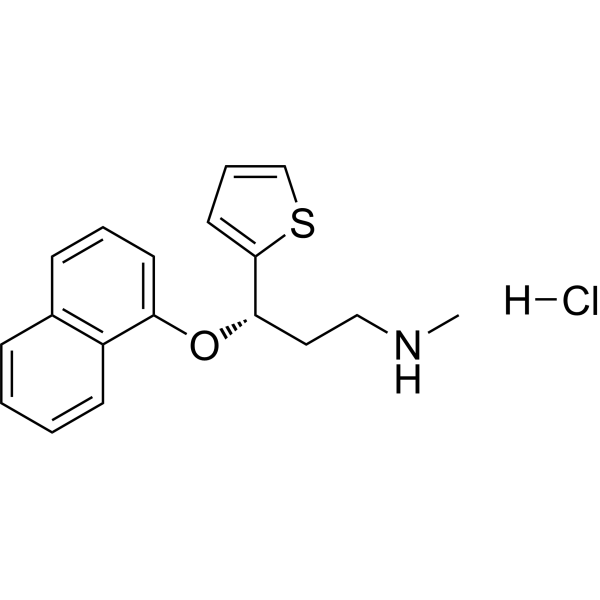
-
- HY-B0492S1
-
|
BRL29060-d4 hydrochloride; BRL29060A-d4
|
Isotope-Labeled Compounds
Serotonin Transporter
Autophagy
|
Neurological Disease
Cancer
|
|
Paroxetine-d4 (hydrochloride) is deuterium labeled Paroxetine (hydrochloride). Paroxetine hydrochloride is a potent selective serotonin-reuptake inhibitor, commonly prescribed as an and has GRK2 inhibitory ability with IC50 of 14 μM. Paroxetine hydrochloride can be used for the research of depressive disorder[1][2][3].
|
-
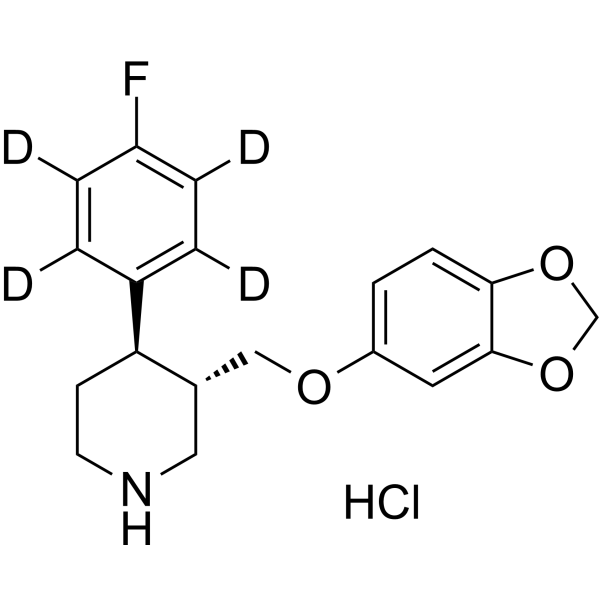
-
- HY-B0492
-
|
BRL29060 hydrochloride; BRL29060A
|
Serotonin Transporter
Autophagy
|
Neurological Disease
Cancer
|
|
Paroxetine hydrochloride is a potent selective serotonin-reuptake inhibitor, commonly prescribed as an GRK2 inhibitor with IC50 of 14 μM. Paroxetine hydrochloride can be used for the research of depressive disorder .
|
-
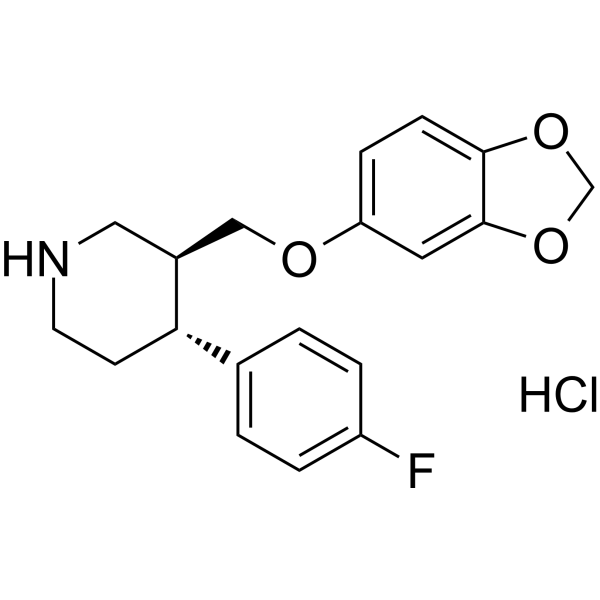
-
- HY-B0176AS1
-
|
|
Serotonin Transporter
|
Neurological Disease
|
|
(±)-cis-Sertraline-d3 (hydrochloride) is the deuterium labeled Sertraline hydrochloride. Sertraline hydrochloride is an antidepressant of the selective serotonin reuptake inhibitor (SSRI) class. Sertraline hydrochloride is researched for a number of diseases, such as major depressive disorder and obsessive[1][2].
|
-
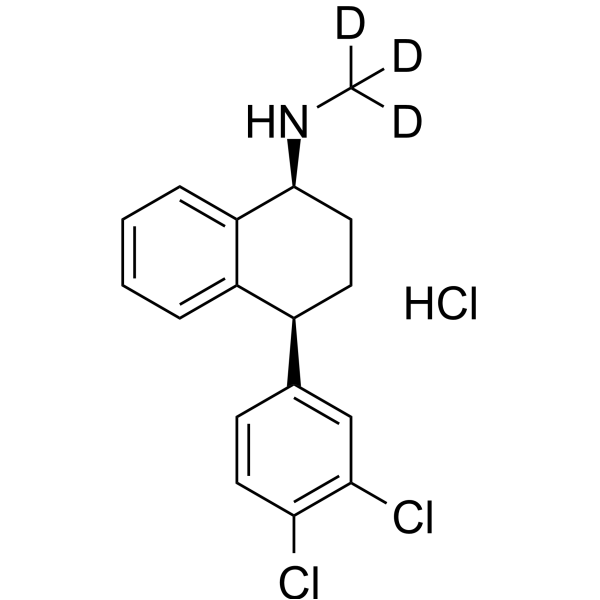
-
- HY-B0176AS
-
|
|
Serotonin Transporter
|
Neurological Disease
|
|
rel-Sertraline-d3 (hydrochloride) is the deuterium labeled Sertraline hydrochloride. Sertraline hydrochloride is an antidepressant of the selective serotonin reuptake inhibitor (SSRI) class. Sertraline hydrochloride is researched for a number of diseases, such as major depressive disorder and obsessive[1][2].
|
-

-
- HY-B0161ES
-
|
(Rac)-Duloxetine-d3 (hydrochloride)
|
Serotonin Transporter
|
Neurological Disease
|
|
(±)-Duloxetine-d3 (hydrochloride) is deuterium labeled (±)-Duloxetine (hydrochloride). (±)-Duloxetine ((Rac)-Duloxetine) hydrochloride is the racemate of Duloxetine hydrochloride. Duloxetine hydrochloride, a serotonin-norepinephrine reuptake inhibitor, can be used for diabetic neuropathic pain and fibromyalgia as well as major depressive disorder research[1].
|
-

-
- HY-100426A
-
|
MKC242
|
|
|
|
Osemozotan hydrochloride (MKC242) is a selective 5-HT1A receptor agonist. Osemozotan hydrochloride decreases the number of c-Fos-positive cells caused by MAMP in mice. Osemozotan hydrochloride can be used for the research of depressive disorder .
|
-
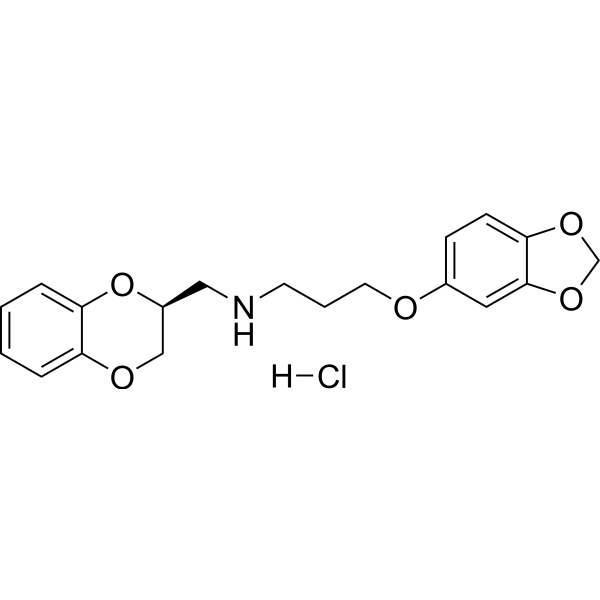
-
- HY-156079
-
|
|
Others
|
Neurological Disease
|
|
Antidepressant agent 5 (Compound 3i) is a 7-substituted tetrahydroisoquinolines derivatives. Antidepressant agent 5 exhibits almost equal antidepressant activity compared with magnoflorine. ntidepressant agent 5 can be used for depressive disorder research .
|
-
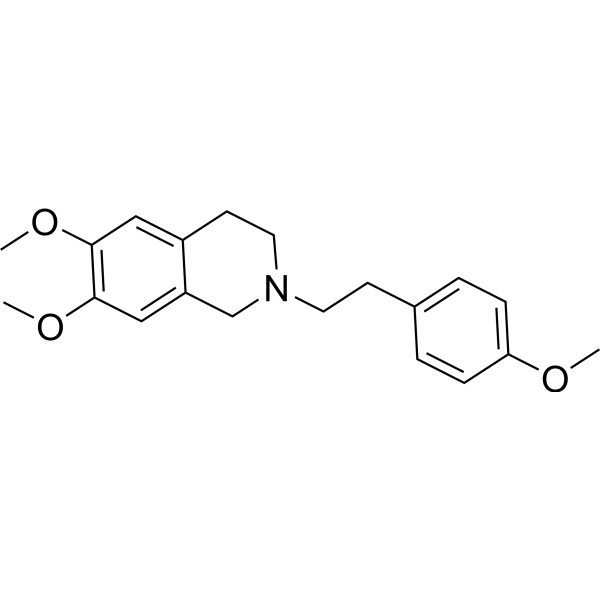
-
- HY-122422
-
|
|
5-HT Receptor
|
Others
|
|
Gepirone is a selective and affinitive 5-HT1A agonist. Gepirone binds selectively to 5-HT1A receptor binding site. Gepirone acts as an antidepressant agent can be used for anxiety and major depressive disorder research .
|
-
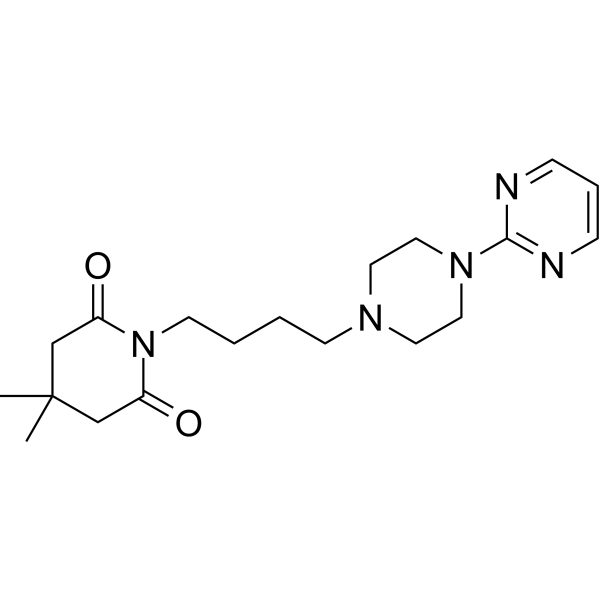
-
- HY-109046
-
|
CX-1632; S-47445
|
iGluR
mTOR
|
Neurological Disease
|
|
Tulrampator (S-47445) is an orally active selective AMPA receptor modulator. Tulrampator possesses procognitive, enhancing synaptic plasticity, anti-depressant-anxiolytic-like, procognitive and potential neuroprotective properties. Tulrampator can be used for research of alzheimer’s disease and in major depressive disorder .
|
-
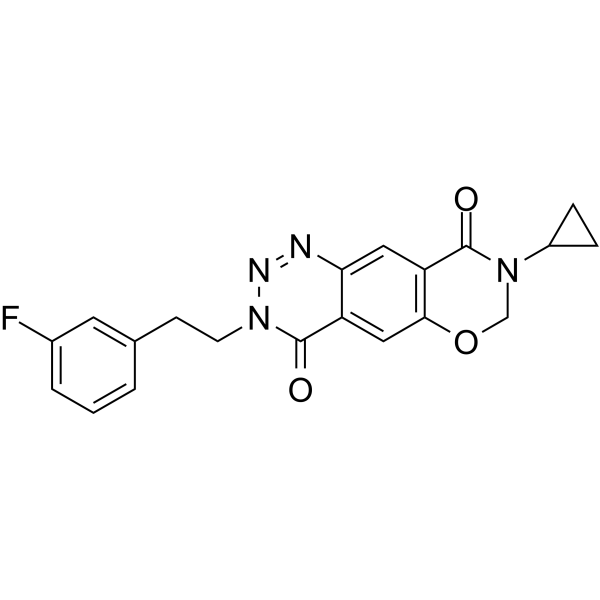
-
- HY-115864
-
|
TAK-653
|
iGluR
Lipoxygenase
|
Neurological Disease
|
|
Osavampator (TAK-653) is a AMPA receptor positive allosteric modulator. Osavampator selectively binds to AMPA-R in a glutamate-dependent manner and induces Ca 2+ influx in hGluA1i CHO cells (EC50 = 3.3 μM). Osavampator improves learning and memory in many models. Osavampator is can be used for the research of depressive disorders .
|
-
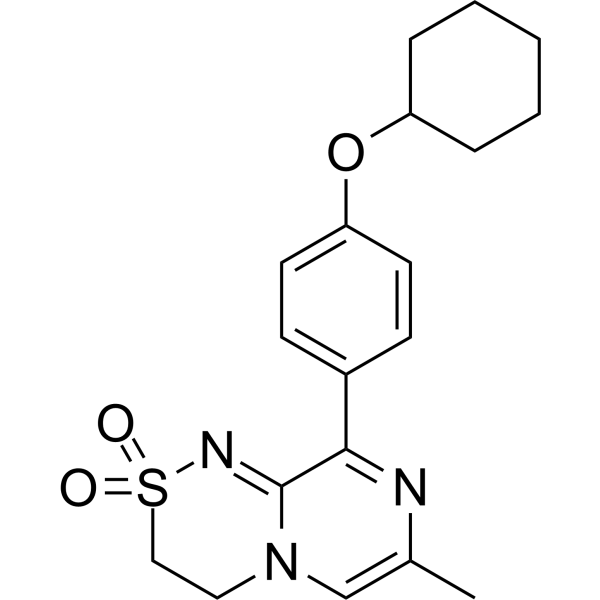
-
- HY-15469
-
|
|
P2X Receptor
|
Neurological Disease
|
|
GW791343 dihydrochloride is a potent human P2X7 receptor negative allosteric modulator (exhibits species-specific activity), produces a non-competitive antagonist effect on human P2X7 receptor, with a pIC50 of 6.9-7.2. GW791343 dihydrochloride can enhance ATP rhythm. GW791343 dihydrochloride can be used in study of neurological disease .
|
-
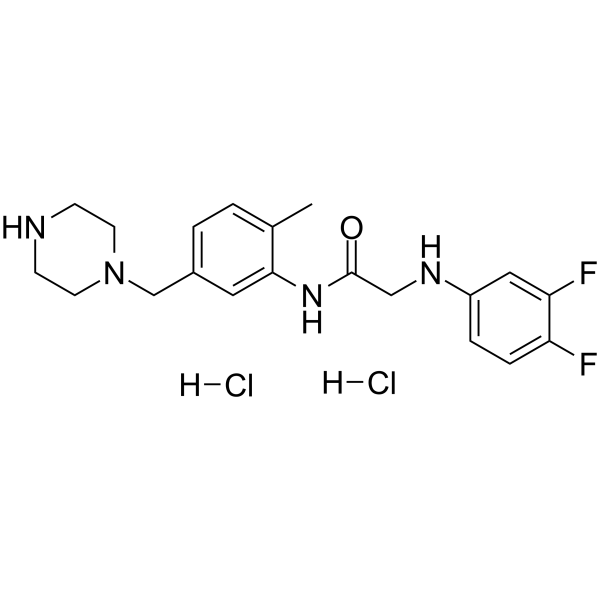
-
- HY-133112
-
|
3-Hydroxy-7-desmethyl agomelatine
|
Melatonin Receptor
5-HT Receptor
|
Neurological Disease
|
|
7-Desmethyl-3-hydroxyagomelatine (3-Hydroxy-7-desmethyl agomelatine), a metabolite of Agomelatine, has less activity than Agomelatine . Agomelatine is a melatonergic (MT1 and MT2) agonist and serotonergic (5HT2C) antagonist .
|
-

-
- HY-15470
-
|
|
P2X Receptor
|
Neurological Disease
|
|
GW791343 trihydrochloride is a potent human P2X7 receptor negative allosteric modulator (exhibits species-specific activity), produces a non-competitive antagonist effect on human P2X7 receptor, with a pIC50 of 6.9-7.2. GW791343 trihydrochloride can enhance ATP rhythm. GW791343 trihydrochloride can be used in study of neurological disease .
|
-
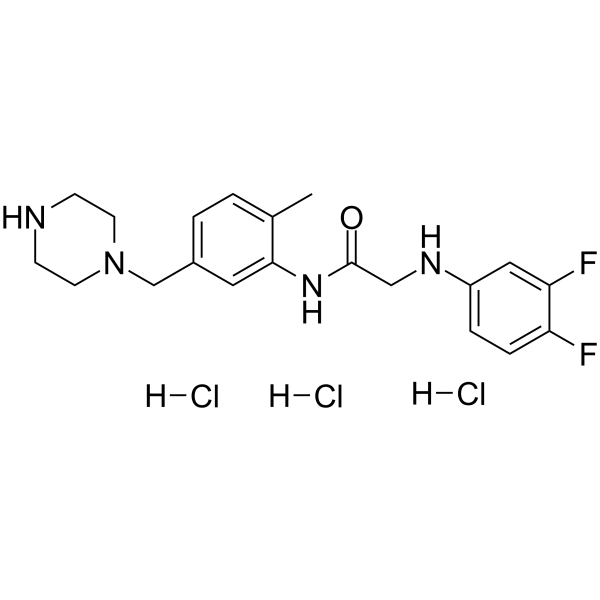
-
- HY-17038
-
|
S-20098
|
Melatonin Receptor
5-HT Receptor
Endogenous Metabolite
|
Neurological Disease
|
|
Agomelatine (S-20098) is a specific agonist of MT1 and MT2 receptors with Kis of 0.1, 0.06, 0.12, and 0.27 nM for CHO-hMT1, HEK-hMT1, CHO-hMT2, and HEK-hMT2, respectively . Agomelatine is a selective 5-HT2C receptor antagonist with pKis of 6.4 and 6.2 at native (porcine) and cloned, human 5-HT2C receptors, respectively .
|
-

-
- HY-17038A
-
|
S-20098 hydrochloride
|
Melatonin Receptor
5-HT Receptor
Endogenous Metabolite
|
Neurological Disease
|
|
Agomelatine hydrochloride (S-20098 hydrochloride) is a specific agonist of MT1 and MT2 receptors with Kis of 0.1, 0.06, 0.12, and 0.27 nM for CHO-hMT1, HEK-hMT1, CHO-hMT2, and HEK-hMT2, respectively . Agomelatine hydrochloride is a selective 5-HT2C receptor antagonist with pKis of 6.4 and 6.2 at native (porcine) and cloned, human 5-HT2C receptors, respectively .
|
-
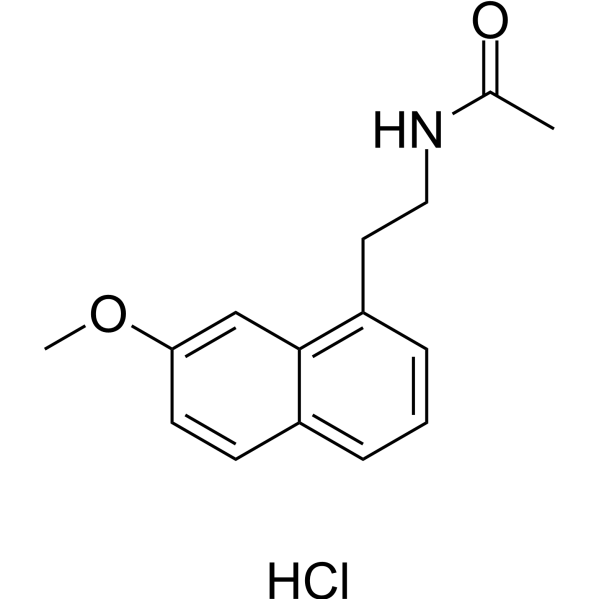
-
- HY-114452
-
|
BTRX-246040
|
Opioid Receptor
|
Neurological Disease
|
|
LY2940094 (BTRX-246040) is a potent, selective and orally available nociceptin receptor (NOP receptor) antagonist with high affinity (Ki=0.105 nM) and antagonist potency (Kb=0.166 nM). LY2940094 reduces ethanol self-administration in animal models .
|
-

-
- HY-17038B
-
|
S-20098 L(+)-Tartaric acid
|
Melatonin Receptor
5-HT Receptor
Endogenous Metabolite
|
Neurological Disease
|
|
Agomelatine L(+)-Tartaric acid (S-20098 L(+)-Tartaric acid) is a specific agonist of MT1 and MT2 receptors with Kis of 0.1, 0.06, 0.12, and 0.27 nM for CHO-hMT1, HEK-hMT1, CHO-hMT2, and HEK-hMT2, respectively . Agomelatine L(+)-Tartaric acid is a selective 5-HT2C receptor antagonist with pKis of 6.4 and 6.2 at native (porcine) and cloned, human 5-HT2C receptors, respectively .
|
-
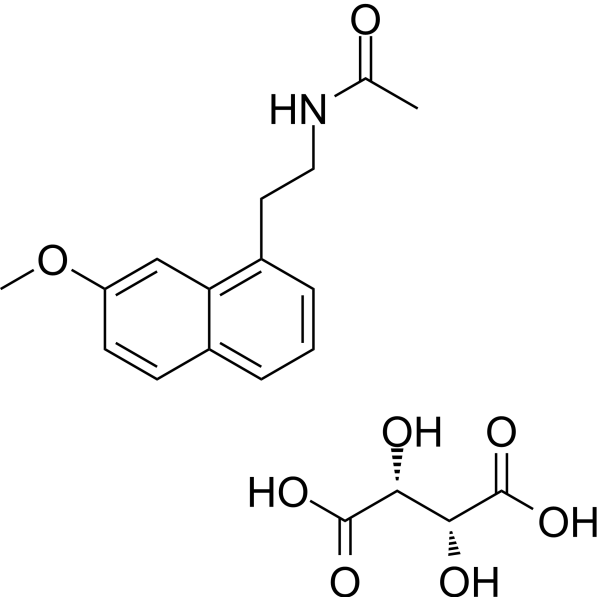
-
- HY-114452A
-
|
BTRX-246040 tartrate
|
Opioid Receptor
|
Neurological Disease
|
|
LY2940094 (BTRX-246040) tartrate is a potent, brain penetrant, selective and orally available N/OFQ peptide (NOP) receptor antagonist with high affinity (Ki=0.105 nM) and antagonist potency (Kb=0.166 nM). LY2940094 tartrate reduces Ethanol self-administration and Ethanol seeking in animal models .
|
-
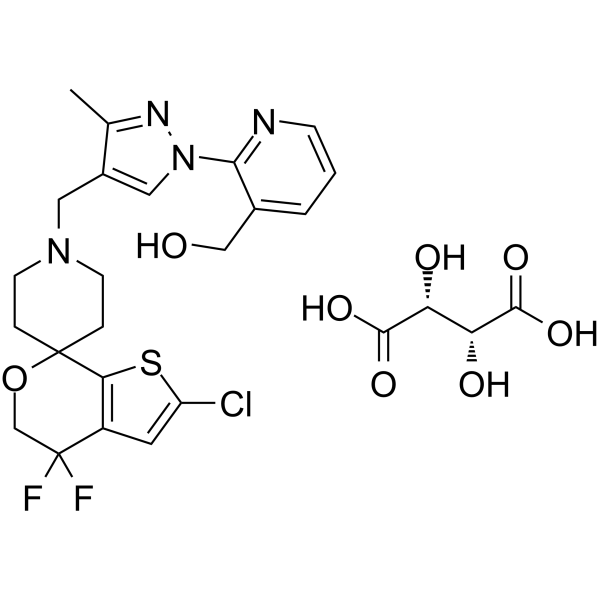
-
- HY-100769
-
|
YL0919
|
5-HT Receptor
|
Neurological Disease
|
|
Hypidone hydrochloride (YL0919) is an orally active antidepressant agent with dual activity as a highly seletive 5-HT uptake blocker and an effective 5-HT1A receptor agonist (Ki=0.19 nM). Hypidone hydrochloride inhibits the uptake of [ 3H]-5-HT into rat cerebral cortical synaptosomes and HEK293 cells with IC50s of 1.78 nM and 1.93 nM, respectively. Hypidone hydrochloride shows remarkable antidepressant effects in animal models and has the poential for the investigation of depressive disorder .
|
-
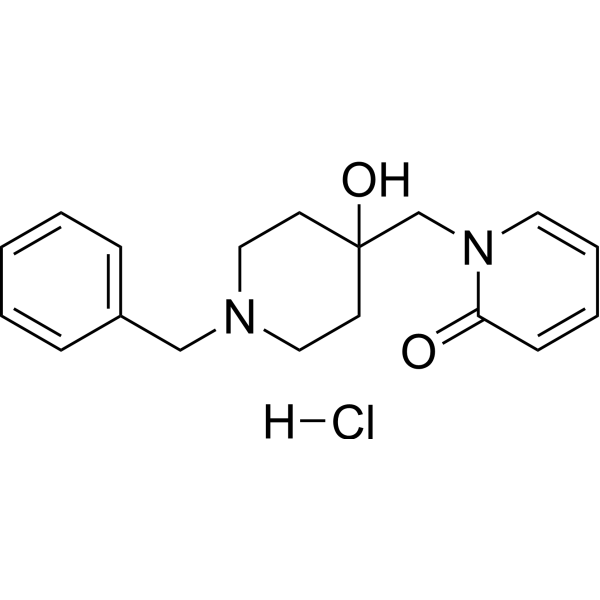
-
- HY-109112
-
|
RP5063
|
Dopamine Receptor
5-HT Receptor
|
Neurological Disease
Inflammation/Immunology
|
|
Brilaroxazine (RP5603) is a potent and orally active multimodal dopamine (DA)/serotonin (5-HT) modulator. Brilaroxazine is a partial agonist of dopamine (DA) D2, D3, and D4 receptors, 5-HT1A (Ki=1.5 nM) and 5-HT2A (Ki=2.5 nM), and has antagonist activity at 5-HT2B (Ki=0.19 nM), and 5-HT7 (Ki=2.7 nM) receptors . Brilaroxazine is an atypical antipsychotic agent, and has the potential to improve cognitive impairments in neuropsychiatric and neurological diseases in vivo .
|
-
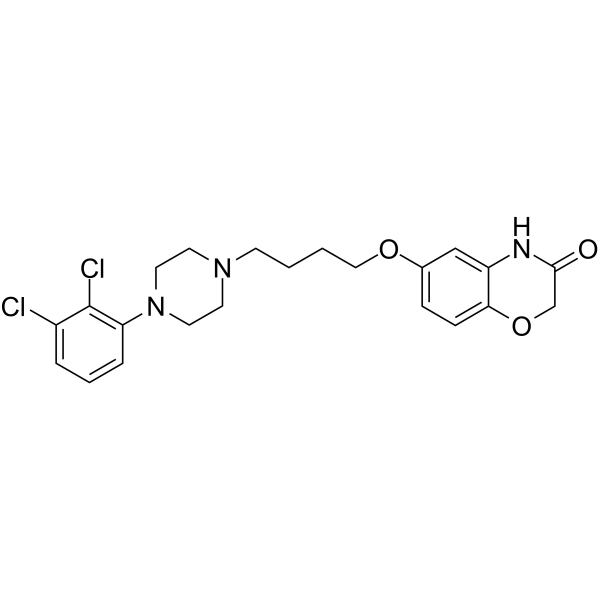
-
- HY-N0749
-
|
|
Cholinesterase (ChE)
5-HT Receptor
Bacterial
|
Neurological Disease
|
|
Jatrorrhizine is an alkaloid isolated from Coptis chinensis with neuroprotective, antimicrobial, antiplasmodial and antioxidant activities . Jatrorrhizine is a potent and orally active inhibitor of AChE (IC50=872 nM) over >115-fold selectivity for BuChE . Jatrorrhizine reduces uptake of serotonin (5-HT) and norepinephrine (NE) via inhibition of uptake-2 transporters .
|
-

-
- HY-N0740
-
|
|
Cholinesterase (ChE)
5-HT Receptor
Bacterial
|
Neurological Disease
Inflammation/Immunology
|
|
Jatrorrhizine chloride is an alkaloid isolated from Coptis chinensis with neuroprotective, antimicrobial, antiplasmodial and antioxidant activities . Jatrorrhizine chloride is a potent and orally active inhibitor of AChE (IC50=872 nM) over >115-fold selectivity for BuChE . Jatrorrhizine chloride reduces uptake of serotonin (5-HT) and norepinephrine (NE) via inhibition of uptake-2 transporters .
|
-
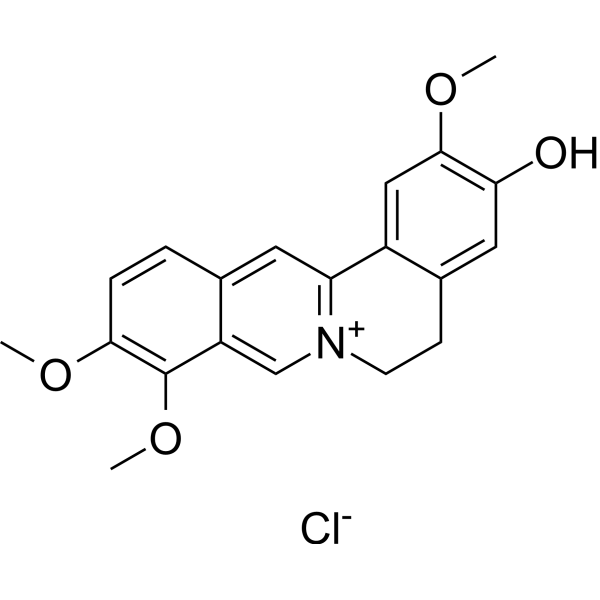
-
- HY-N0749A
-
|
|
Cholinesterase (ChE)
5-HT Receptor
Bacterial
|
Neurological Disease
Inflammation/Immunology
|
|
Jatrorrhizine hydroxide is an alkaloid isolated from Coptis chinensis with neuroprotective, antimicrobial, antiplasmodial and antioxidant activities . Jatrorrhizine hydroxide is a potent and orally active inhibitor of AChE (IC50=872 nM) over >115-fold selectivity for BuChE . Jatrorrhizine hydroxide reduces uptake of serotonin (5-HT) and norepinephrine (NE) via inhibition of uptake-2 transporters .
|
-
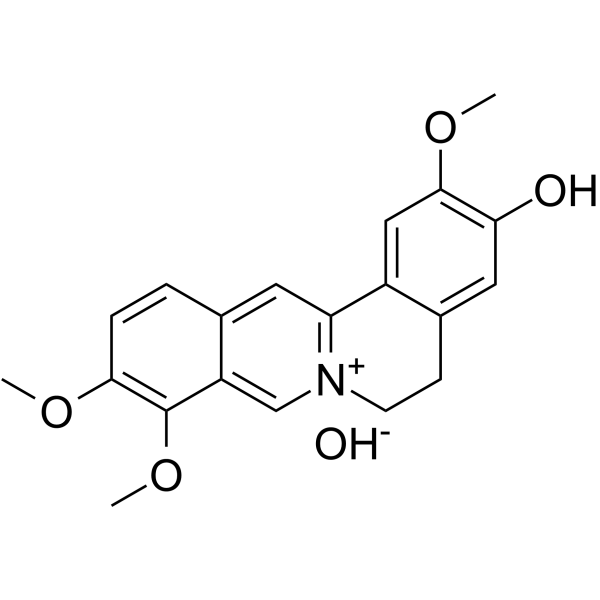
-
-
HY-L108
-
|
|
1703 compounds
|
|
Depression is a serious global affective disorder and one of the most common neurological diseases whose clinical manifestations are low mood, loss of interest, anhedonia, loss of energy, and fatigue, people with major depressive disorder (MDD) can even have suicidal thoughts and behaviors.
Currently available antidepressants have significant limitations, including a long time lag for a therapeutic response (weeks to months) and low response rates. This is particularly problematic for a disease with a high suicide rate. Therefore, the development of new antidepressant drugs is particularly urgent.
MCE offers a unique collection of 1703 compounds with antidepressant activities or targeting the unique targets of depression. MCE Antidepressant Compound Library is a useful tool for exploring the mechanism of depression and discovering new drugs for depression.
|
| Cat. No. |
Product Name |
Target |
Research Area |
-
- HY-P10029
-
|
|
Peptides
|
Neurological Disease
|
|
Sakura-6 is a SERT-nnos interaction promoter that significantly increases the SERT-nnos complex, but reduces the level of SERT on the cell surface. Acute injection of Sakura-6 into the dorsal raphe nucleus (DRN) causes depression-like behavior in mice .
|
| Cat. No. |
Product Name |
Category |
Target |
Chemical Structure |
| Cat. No. |
Product Name |
Chemical Structure |
-
- HY-151216S
-
|
|
|
rel-Paroxetine-d4 (hydrochloride) is an isotope-labeled Paroxetine hydrochloride (HY-B0492). Paroxetine hydrochloride is an orally active and selective serotonin-reuptake inhibitor, commonly prescribed as an GRK2 inhibitor with IC50 of 14 μM. Paroxetine hydrochloride can be used for the research of depressive disorder[1][2][3][4].
|
-

-
- HY-B0161S
-
|
|
|
Duloxetine-d7 ((S)-Duloxetine-d7) is the deuterium labeled Duloxetine. Duloxetine is a serotonin-norepinephrine reuptake inhibitor with a Ki of 4.6 nM, used for treatment of major depressive disorder and generalized anxiety disorder (GAD)[1][2].
|
-

-
- HY-B0492S1
-
|
|
|
Paroxetine-d4 (hydrochloride) is deuterium labeled Paroxetine (hydrochloride). Paroxetine hydrochloride is a potent selective serotonin-reuptake inhibitor, commonly prescribed as an and has GRK2 inhibitory ability with IC50 of 14 μM. Paroxetine hydrochloride can be used for the research of depressive disorder[1][2][3].
|
-

-
- HY-B0176AS1
-
|
|
|
(±)-cis-Sertraline-d3 (hydrochloride) is the deuterium labeled Sertraline hydrochloride. Sertraline hydrochloride is an antidepressant of the selective serotonin reuptake inhibitor (SSRI) class. Sertraline hydrochloride is researched for a number of diseases, such as major depressive disorder and obsessive[1][2].
|
-

-
- HY-B0161AS
-
|
|
|
Duloxetine-d3 (hydrochloride) is a deuterium labeled Duloxetine hydrochloride. Duloxetine hydrochloride is a serotonin-norepinephrine reuptake inhibitor (SNRI) with a Ki of 4.6 nM, used for treatment of major depressive disorder and generalized anxiety disorder (GAD)[1][2].
|
-

-
- HY-B0176AS
-
|
|
|
rel-Sertraline-d3 (hydrochloride) is the deuterium labeled Sertraline hydrochloride. Sertraline hydrochloride is an antidepressant of the selective serotonin reuptake inhibitor (SSRI) class. Sertraline hydrochloride is researched for a number of diseases, such as major depressive disorder and obsessive[1][2].
|
-

-
- HY-B0161ES
-
|
|
|
(±)-Duloxetine-d3 (hydrochloride) is deuterium labeled (±)-Duloxetine (hydrochloride). (±)-Duloxetine ((Rac)-Duloxetine) hydrochloride is the racemate of Duloxetine hydrochloride. Duloxetine hydrochloride, a serotonin-norepinephrine reuptake inhibitor, can be used for diabetic neuropathic pain and fibromyalgia as well as major depressive disorder research[1].
|
-

Your information is safe with us. * Required Fields.
Inquiry Information
- Product Name:
- Cat. No.:
- Quantity:
- MCE Japan Authorized Agent:
















































